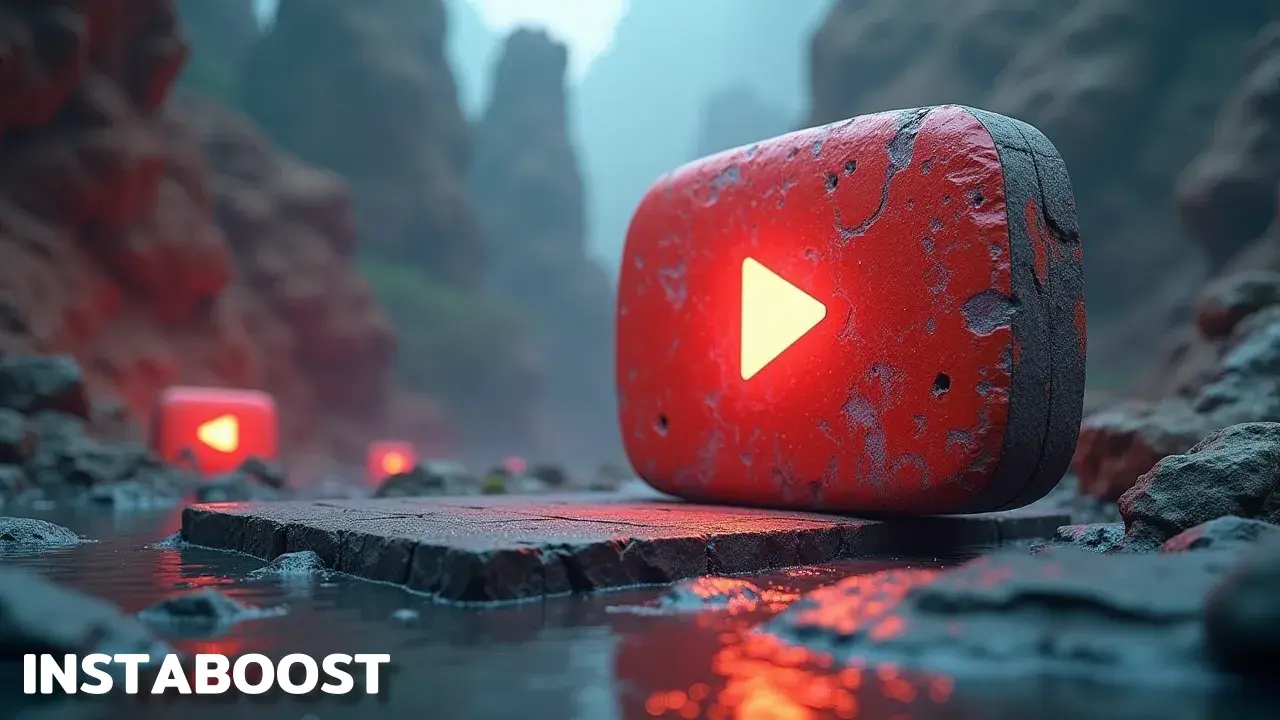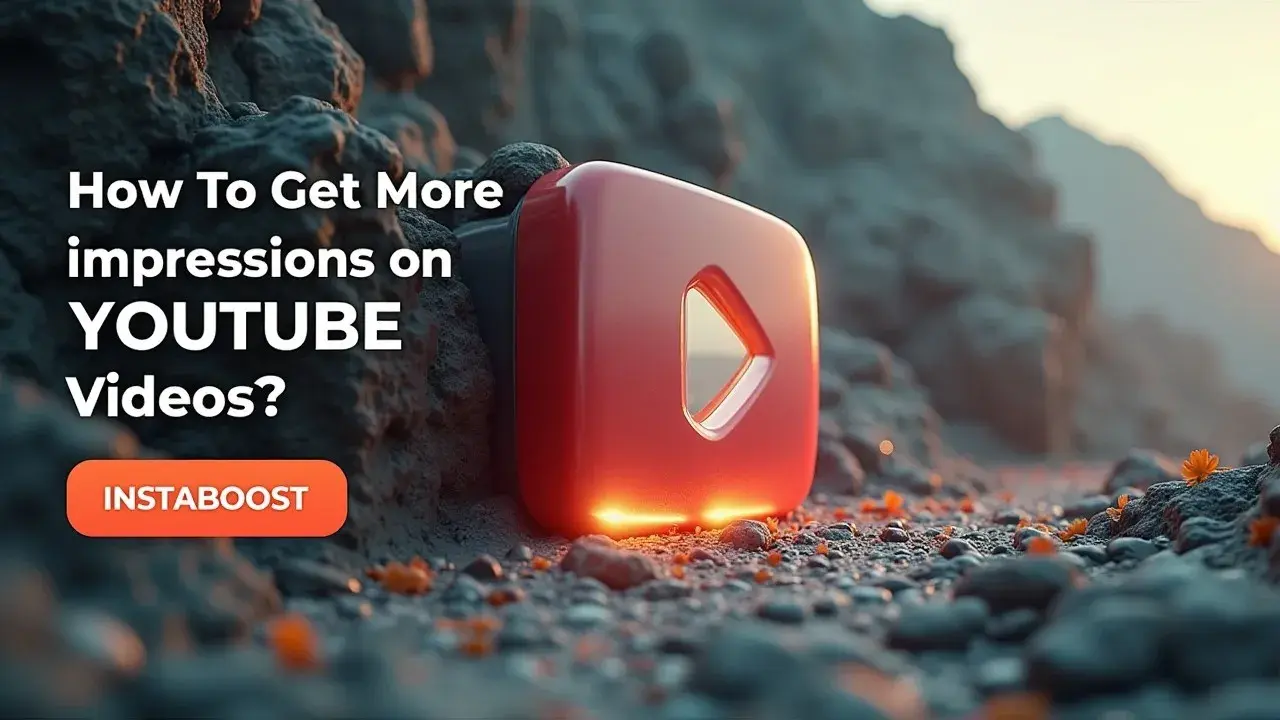How to Get More Impressions on YouTube Videos?
Growing impressions on YouTube comes from aligning topics with real viewer intent and timing. Consistent uploads can boost first-hour momentum, which supports broader distribution. Track where watch time drops, refine thumbnails, and tighten pacing so retention strengthens the signal that drives more surface exposure. Incremental weekly improvements compound, turning brief spikes into steadier growth when sequencing is thoughtful and measurement guides each small tweak.
Impressions Start Before You Hit Upload
Impressions start before you hit upload. You get more YouTube impressions when the system believes your video will win attention from the right people, so start by matching topic and timing to real viewer intent and make that fit unmistakable. Treat the idea like a search query and a feed bet at once. Study what your audience already clicks in Browse and Suggested – titles, angles, formats – then decide where you can sharpen the promise and deliver tighter. Early momentum matters because the first hour teaches the algorithm who engages. Pair a compelling hook with a thumbnail that resolves curiosity instead of echoing the title, and make the first 30 seconds truly watchable to earn the retention signals that unlock wider distribution.
Paid boosts and promotions work when they’re targeted to likely viewers and measured with clean analytics; third‑party dashboards, including tools like YouTube promotion tools, are only useful if they preserve attribution and don’t pollute your baselines. Reputable placements that drive real comments and above-average watch time compound, while broad, untargeted traffic muddies your data and slows learning. Creator collabs become a force multiplier when audience overlap is explicit and the format fits that overlap. Think in sequences, not singles. A focused series around one search term or storyline builds session depth and primes Suggested impressions across your catalog.
The non-obvious edge is pacing for rewatchable clarity – remove one beat of confusion per minute and you can add 5 – 10% to retention, which scales better than thumbnail tricks alone. If you keep a weekly testing loop – topic fit, thumbnail variance, opening retention graph – you’ll stack small gains the system rewards with more impressions, because your track record shows you convert exposure into satisfaction.

Earn the Green Lights: Signals That Make You Believable to the Algorithm
Before I earned trust, I had to unlearn what I thought I knew. Views don’t move impressions – credible signals do. The system isn’t sentimental. It’s probabilistic. It expands your YouTube impressions when your recent uploads show that similar viewers stop, click, and stay. That means your pitch – title and thumbnail – and your payoff – retention – need to match.
If your Browse CTR spikes but 30-second holds sag, the model throttles reach. Fix that mismatch before you scale. Use a simple testing loop. Release two adjacent videos on the same theme with different promises, then study the first 48 hours – CTR by surface, average view duration, where viewers skip or rewind. When the hook aligns with the first minute, watch time climbs and Suggested unlocks. Add social proof that reads as intent-aligned: real comments pinned up top, chapter marks that map curiosity, and one targeted promotion to a warm audience segment; paid accelerants only help if they don’t pollute your dataset or mask whether you actually increase subscribers on YouTube through earned behavior.
Collaborations are another credibility lever if the partner’s audience overlaps your search term and is primed for your pacing. A short cameo with a handoff link can outperform a long co-stream. Keep your catalog coherent – clusters around a viewer problem make the next impression safer for the model to place. Declare a cadence you can defend. Early momentum from consistent uploads teaches the system your videos are dependable bets. The non-obvious bit is that restraint builds trust – amplify what already holds attention organically, then scale the exact elements that created the hold.
Prime the Path: Packaging That Deserves the Click
This isn’t about speed. It’s about staying power. Treat packaging as a repeatable system that earns more YouTube impressions by making the right people confident they’ll get what they came for. Start upstream. Outline your video in beats, then draft 3 – 5 working titles that promise a specific outcome and test them with a quick poll, a community post, or a small paid test to a qualified audience. Reputable micro-tests show which angle actually stops someone in Browse without polluting your analytics, and the same discipline helps you get noticed faster on YouTube by aligning promise and payoff.
Design thumbnails last so the image amplifies the promise you already proved – a single focal subject, a decisive verb, and contrast that reads at two inches. Pair that with an opening 20 seconds that delivers the promised payoff signal early. Front-load the aha, then earn the depth. This alignment lifts retention and click-through rate together – the combo that moves Suggested. If you want a nudge, targeted promotion works when it’s matched to intent, aimed at searchers and channel lookalikes, throttled to geos you can serve, and separated as a distinct traffic source so your clean analytics stay intact. Close the loop with a weekly testing cadence.
Swap one thumbnail variant, rewrite one title, and measure impression-to-click and first 30 seconds hold on new vs. returning viewers. Real comments are a retention probe. If viewers cite the hook or the payoff, you’re on-claim. Collab strategically – guest with a creator in an adjacent niche where your promise strengthens their audience’s next step, then sequence an end screen that tees up your most complementary video. Done consistently, this system compounds small wins into the kind of early momentum the algorithm believes.
When the Algorithm Shrugs: Reset Without Starting Over
So, what happens when none of it works? Treat it like a clean-room diagnosis, not a funeral. If impressions stall after you’ve tuned titles and thumbnails, pull a 7-day sample and compare three things: the first 24-hour click-through rate on Browse, the 30 – 60 second retention slope, and the comment quality – are they tagging friends or summarizing value? Low CTR with solid retention means your packaging is misaligned to intent, so run a micro-test with two new title angles to a qualified audience and protect clean analytics by excluding subscribers. Strong CTR with early drop-off says your hook overpromises.
Rewrite the first 20 seconds to pay the promise immediately, then layer in context. If both are soft, your topic likely misses real demand. Borrow adjacent authority with a tight creator collab that shares your viewer profile and use targeted promotion to seed early momentum that teaches the system who should see you. Paid boosts work when the audience is matched to intent and frequency is capped, and they pair best with organic-looking YouTube view growth that doesn’t interrupt watch behavior. Choose reputable placements and measure lift in suggested impressions, not vanity views. Before you publish again, set up a testing loop: outline beats, script the hook to deliver the promised outcome by timestamp 0:20, and place a retention checkpoint at 1:30 where you introduce the next payoff.
Change one controllable variable per upload so attribution is obvious. Real comments help the algorithm read satisfaction. Ask a specific, non-leading question that invites clips-worthy replies. If your back catalog confuses YouTube, segment series into clear playlists and pause unrelated topics for a month – consolidation can raise topical authority and get more YouTube impressions. The non-obvious move is to trim or update underperforming thumbnails on past winners. Revivals often surface your best inventory and lift the channel’s baseline.
Ship Small, Learn Fast: The Compounding Loop
You don’t need to be fully ready – you just need to be moving. Momentum builds when you ship, measure, and adjust in tight cycles that match how YouTube actually hands out impressions. Treat each upload like a hypothesis. The title and thumbnail set a clear promise, the first 60 seconds deliver the payoff, and a steady retention spine earns Browse distribution.
Run small, reputable tests – two title angles to a qualified audience, a thumbnail variant that clarifies the outcome – and keep analytics clean by excluding subscribers and isolating traffic sources. If CTR looks healthy but the 30 – 60 second slope droops, tighten the hook and cut the scenic intro. If retention holds and comments summarize the value, use a modest, targeted promotion to build early momentum. Collaboration works when it matches audience intent, not just creator size. A focused collab that tees up your topic can spike watch hours without confusing the feed. Hold a weekly packaging and pacing hour.
Log the title that won micro-tests, the frame that stopped scroll, the exact beat where rewinds spiked, then translate that into your next outline. The goal isn’t a viral lottery ticket. It’s a repeatable system where promise and payoff align so the right people click and stay. As impressions rise, protect quality by resisting over-broad keywords – rank for the niche phrase your video truly answers before chasing bigger terms. If a video stalls, reset with the clean-room checklist you’ve been using, swap in the stronger angle, and reintroduce it through a community post or your end screen network. This is how you get more impressions on YouTube videos – precise intent, faster proof, and iterative packaging that makes the algorithm’s job easy.















